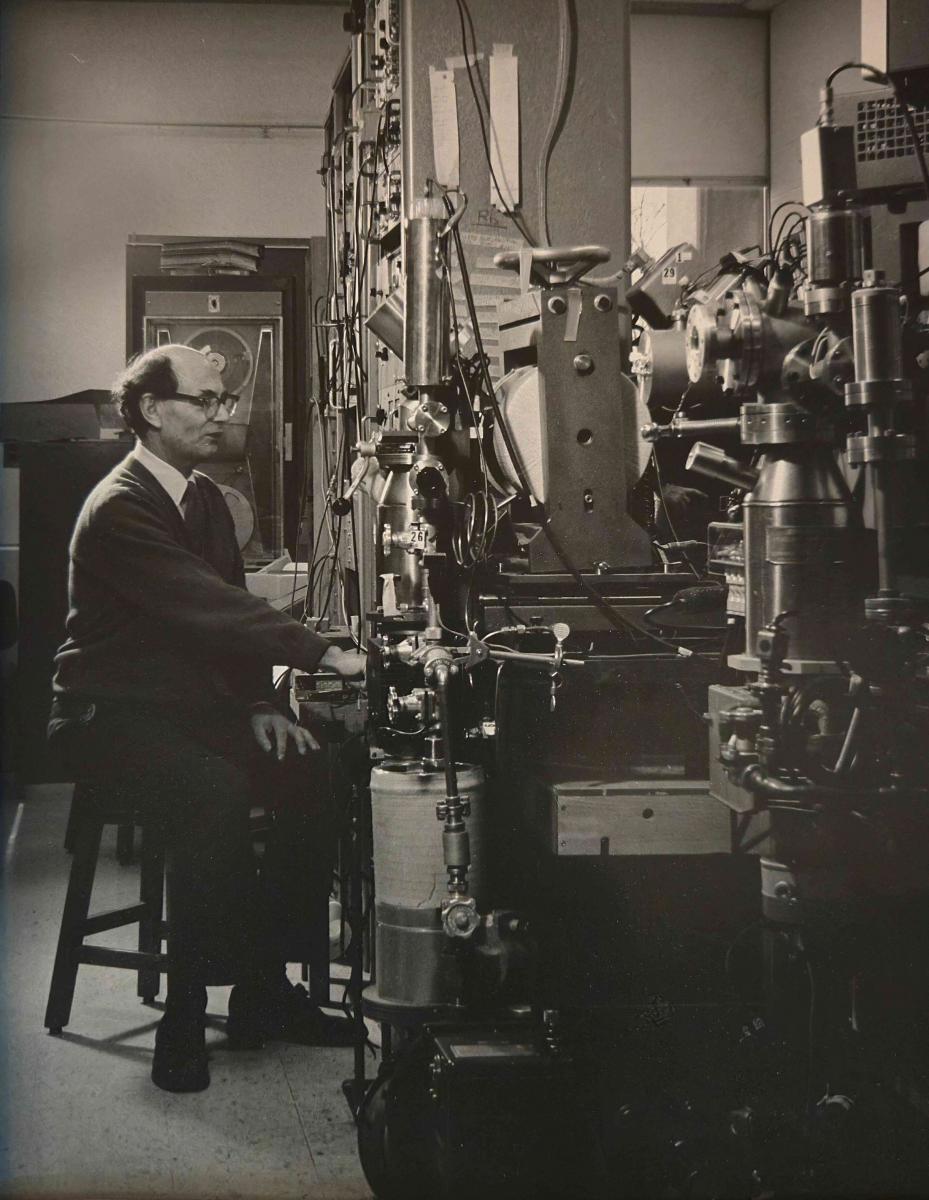Thomas James Stephenson Cole 1920-2025
Department of Physics, Carleton College/Carleton University
1947-1985
James was born in 1920 in England. His family moved to the United States that same year. In 1928 James was sent back to England to attend boarding school. After graduating from school at the age of 17, he attended Imperial College, University of London. He graduated in 1940 with a BSc in Engineering and was immediately recruited to the Air Defence Research and Development Establishment. He worked on radar research and defence for the duration of the Second World War.
In 1947 he rejoined his Mother and siblings in Ottawa. In August of that year, James was hired by Dr. Allan Munn head of the newly formed Department of Physics at Carleton College, then located on First Avenue in the Glebe, to supervise physics labs and tutorials. This brought the staff of the Physics Department to one Professor and one Assistant. While working under Professor Munn, James also studied for, and obtained, a BSc in Applied Physics from Carleton College in 1951.
In 1955, Carleton granted James a three-year leave of absence to pursue a PhD. He returned to England with his young family to begin a PhD in Physics at Cambridge University under Sir Edward Bullard, a renowned Geophysicist. James focused on the concept of geologic isotope age determination. This was in development by only 3-5 active groups in the world at the time. While at Cambridge, James re-designed an existing mass spectrometer and made some successful measurements of isotope ratios by atmospheric argon.
In 1958, James returned to what was now Carleton University. After completing his Cambridge PhD in Fossil Atmospheric Argon in 1962, James became an Associate Professor at Carleton. He continued to work on sulphur dioxide isotope ratio determination and potassium argon dating in collaboration with Professor William Tupper of the Geology Department.
In 1967-1968, James spent a sabbatical year at the University of Leeds in England carrying out further isotope dating research with rubidium/strontium and uranium/lead. On his return to Carleton, James introduced the idea of using computer automated mass spectrometry for rubidium/strontium dating.
In 1982, Professor Keith Bell, of the Geology Department obtained a grant from NSERC for the funding of computer-based geologic dating projects. James assisted with the evaluation, purchase and installation of a commercial mass spectrometer in the Physics Department. In addition to his teaching and other duties in the Physics Department, James continued to focus on mass spectrometer work in conjunction with colleagues, particularly Doug Menagh, in the Physics and Geology Departments until he retired in 1985.
In 1992, James was approached by Geology Department at Ottawa University, to help build a running mass spectrometer from two non-functioning machines. In collaboration with his Carleton colleague Doug Menagh, he assisted with the project on a volunteer basis until 2002. The rebuilt machine was installed at Ottawa University and used to measure negative ion isotopes
For James, Carleton University as a whole, and the Physics Department in particular, were an integral part of his journey through life. He moved with Carleton from its beginnings as a small college in the Glebe, to its modern campus on the Rideau River. As staff member, he moved from Lab Assistant to Associate Professor.
James passed away in February, 2025 at 104. In recognition of the important role that Carleton University played in his life, in June 2025 James made a donation in his name to the Trevor A. Harwood Award, which supports students in the Earth Sciences and Physics.
Sources:
Cole, T.J.S, Oral History Documented by his Children, 2013
Carleton University, Department of Physics Website, “History of Physics Department.” https://physics.carleton.ca/about/history
Simonetti, Antonio. “Preface—Dedication to Keith Bell.”, Miner Petrol 98 (16 January, 2010): 1–3
Sundaresen, M.K. and Clarke, R.L. “History of Carleton's Physics Department.”, Physics in Canada, 59, no.1 (January-February 2003): 17-24.
